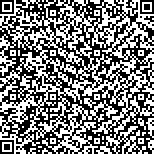| 摘要: |
| 从刺激隐核虫(Cryptocaryon irritans)滋养体/包囊前体cDNA文库中筛选出了甘油醛-3-磷酸脱氢酶基因(CiGAPDH), 定点诱变CiGAPDH基因开放阅读框内的非通用密码子后, 构建其原核表达载体pGEX-4T-3/CiGAPDH, 转化到大肠杆菌BL21(DE3)中, 用异丙基硫式-B-D-半乳糖苷诱导表达, 结果大肠杆菌成功表达了rCiGAPDH蛋白。用抗rCiGAPDH蛋白的鼠血清进行免疫印迹分析, 结果抗血清能够识别刺激隐核虫各期虫体的天然CiGAPDH蛋白, 其表观分子质量为37.3 ku,与根据氨基酸序列推算的理论值相符;实验表明rCiGAPDH蛋白具有很好的免疫原性, 而且CiGAPDH在生活史的各阶段均有表达, 符合持家基因的特征。利用间接免疫荧光抗体实验(IFAT)检测天然CiGAPDH蛋白在刺激隐核虫幼虫上的定位, 结果表明天然CiGAPDH蛋白主要分布在幼虫的细胞质内, 且在胞口位置分布最多。对CiGAPDH 的进一步研究可能为刺激隐核虫感染的药物靶点的寻找多条线索。 |
| 关键词: 刺激隐核虫(Cryptocaryon irritans) 甘油醛-3-磷酸脱氢酶 原核表达 定位 |
| DOI: |
| 分类号: |
| 基金项目:福建省教育厅JK 项目(JK2013008); 福建省自然科学基金项目(2014J01120); 福建省农业重大专项(2013NZ0002-5) |
|
| Molecular characterization of a Glyceraldehyde-3-phosphate dehydrogenase from Cryptocaryon irritans |
|
FU Guo-liang,SHAN Jin-hong,HU Yan-hong,XIE Jin-zhu,YAN Yan-hua,HUANG Xiao-hong
|
| Abstract: |
| A GAPDH gene (CiGAPDH) was cloned from the cDNA library of Cryptocaryon irritans trophonts. After modification, the non-universal genetic codons in the open reading frame (ORF) of CiGAPDH were inserted into plasmid pGEX-4T-3 to construct the prokaryotic expression plasmid pGEX-4T-3/CiGAPDH. The recombinant plasmids were transformed to Escherichia coli BL21 (DE3) cells, which were then induced to express the foreign gene by the addition of isopropyl-beta-D-thiogalactopyranoside. SDS-PAGE results showed that rCiGAPDH was successfully expressed in E. coli cells. The results from Western blot analysis showed that antiserum against rCiGAPDH recognized the native CiGAPDH protein from different stages of C. irritans, the molecular mass of which was 37.3 ku, in agreement with the calculated mass. Localization of native CiGAPDH protein in theronts was detected using an indirect immunofluorescence cell imaging technique. The results showed that the native CiGAPDH protein was mainly distributed in the cytoplasm of C. irritans theronts, with notable accumulation around the cytostomes. Further study on the roles of CiGAPDH in the parasite development and infection is expected to provide important information to identify potential drug targets for control of cryptocaryosis. |
| Key words: Cryptocaryon irritans glyceraldehyde 3-phosphate dehydrogenase prokaryotic expression location |
